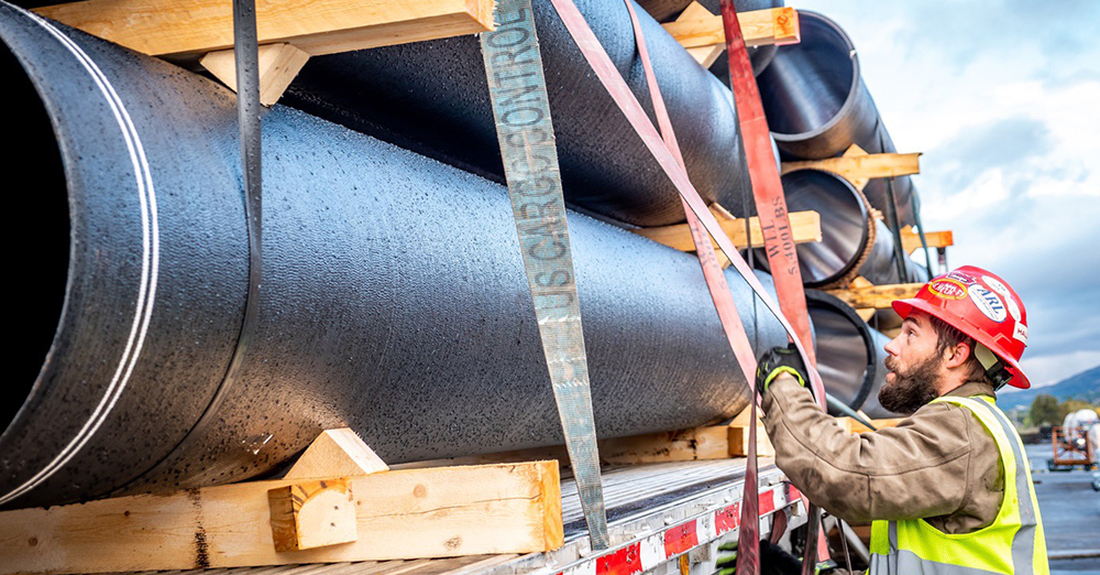
Utility pole hauling refers to the logistical process of transporting long, heavy utility poles from their manufacture or storage site to their installation location for utility projects. Mismanaged hauling can affect the price and efficiency of installation. Learn how utility pole hauling impacts your project, including budget implications, timing and project scheduling, and stress management.
Budget Implications
When it comes to utility pole hauling, several cost factors come into play. First and foremost are the direct transportation expenses. These include fuel, labor, and potential rental of specialized hauling equipment.
Delayed or inefficient hauling can lead to increased expenses in the form of project delays, overtime pay, and missed opportunities. Fortunately, because of the light weight of ductile iron poles, utility companies can use their existing installation equipment. Ductile iron reduces the cost of pole hauling by eliminating the need to rent or purchase specialized equipment and by simplifying transportation.
Timing and Project Scheduling
Delays in the transportation of poles can negatively impact subsequent project steps and disrupt the overall project timeline. Unforeseen circumstances, such as inclement weather or traffic congestion, can cause major delays in utility pole transportation, pushing back the project timeline. Additionally, insufficient planning or coordination with the transportation team can lead to unexpected hold-ups, further disrupting the project schedule.
Pole material can affect the efficiency of pole hauling. For example, ductile iron distribution poles are lighter than traditional wood or concrete poles, making them easier and cheaper to transport. This aspect not only minimizes the logistical challenges associated with pole hauling but also reduces the overall project timeline.
Stress Management
For project managers, problems with utility pole hauling can increase stress levels in an already high-pressure environment. Delays or damage during transportation can lead to frustration and additional workloads.
Ask the utility pole manufacturer if they can provide the poles in sections for field assembly. Sections allow for easier and more efficient handling, transportation, and storage. Additionally, field assembly can potentially reduce the risk of pole damage during transit.
This method also allows for transporting longer poles that may otherwise exceed vehicle size restrictions. Once on-site, workers can assemble the sections precisely to provide a sturdy and reliable structure for utility lines.
Utility pole hauling is a critical component of any utility project that directly impacts budget, timeline, and stress levels. Efficient operations can be achieved through forward-thinking strategies such as opting for lighter materials like ductile iron and considering segmented poles for easier transportation. Recognizing these factors can lead to a more streamlined, cost-effective, and stress-free project.

